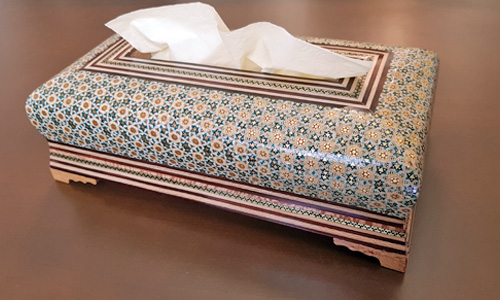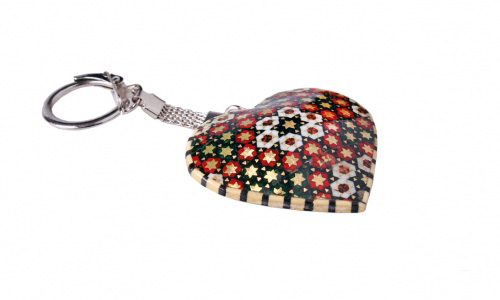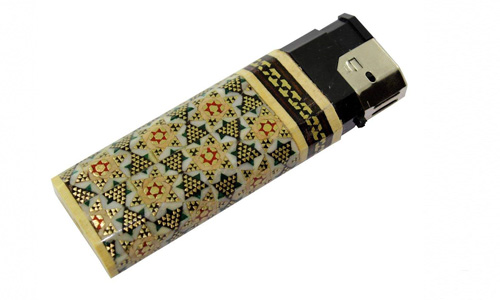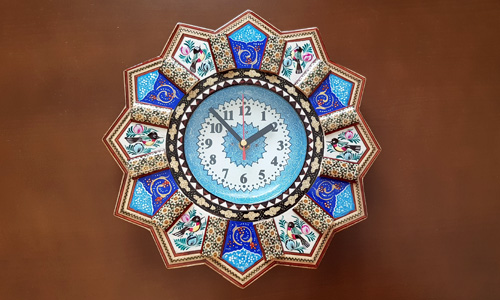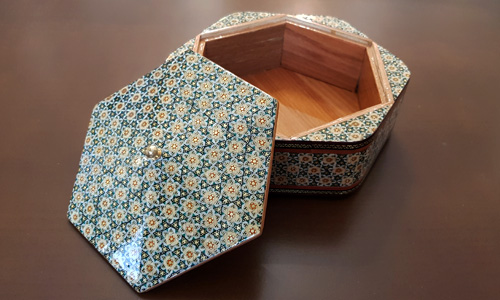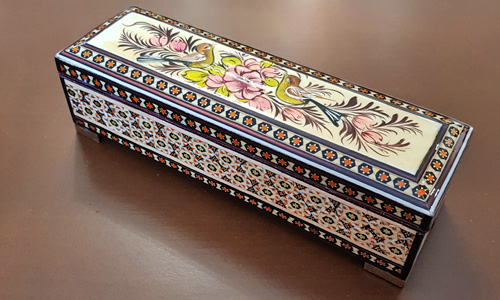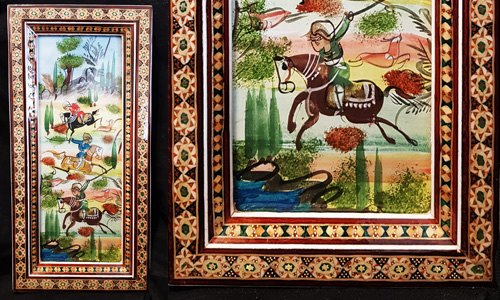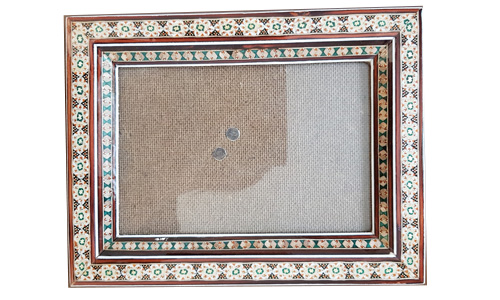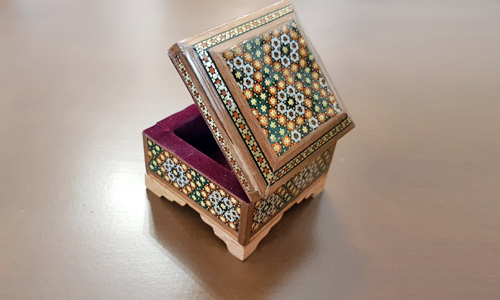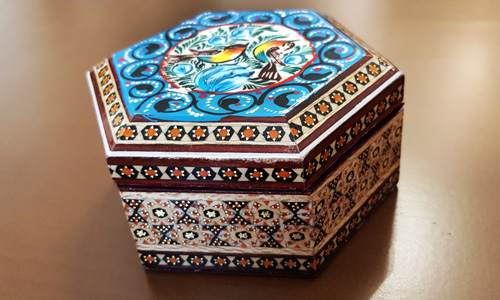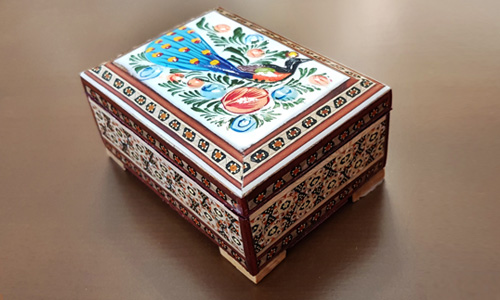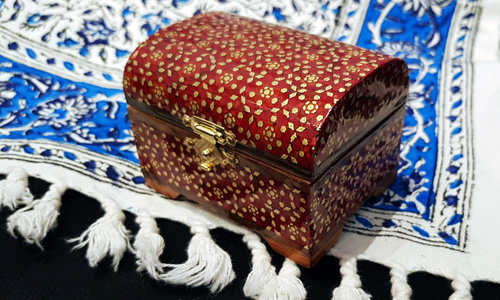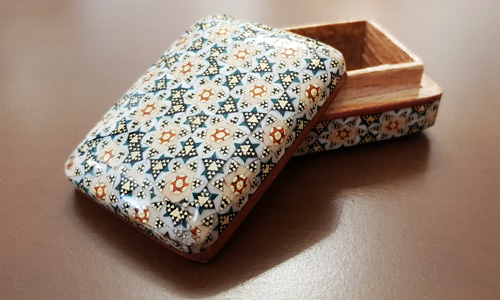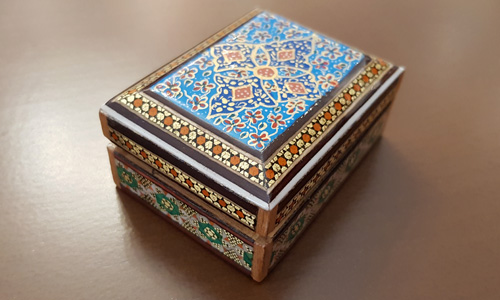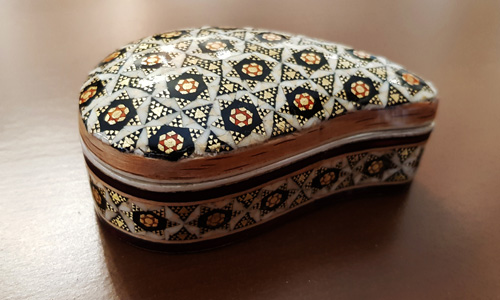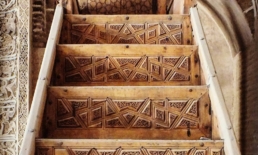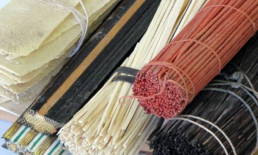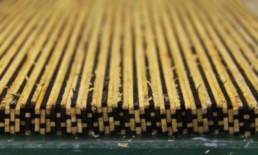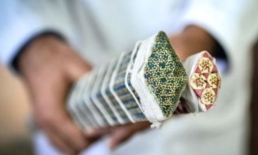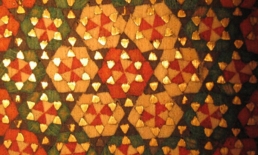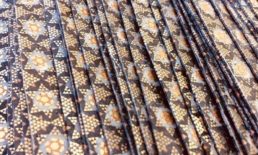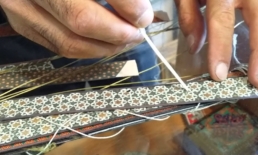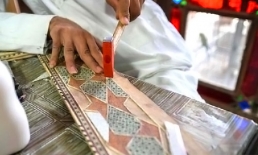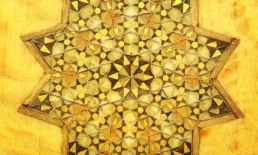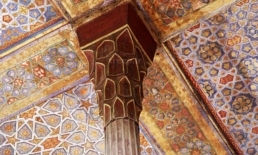Khātam (Marquetry)
There are some Masterpieces of Khātam in a thousand-year Jame mosque of Atigh in Shiraz city, Persia (Iran). These masterpieces can show clearly the background of this art in Iran. (pic 1)
Khātam is an ancient Persian technique of inlaying. It is a version of marquetry where art forms are made by decorating the surface of wooden articles with delicate pieces of wood and metal precisely-cut intricate geometric patterns. (pic 2)
Designing of inlaid articles is a highly elaborate process.
There are sometimes more than 400 pieces per square inch in a work of average quality. (pic 3)
Thin rods of different colored woods, brass, silver, etc. were glued together into long bunches that could have a round, rectangular, or polygonal cross-section. (pic 4 – pic 5)
The bunches were cut into thin slices and combined with others to create intricate patterns. (pic 6)
In each cubic centimeter, up to approximately 250 individual pieces can end up side by side, smoothed, oiled and polished.
(pic 7 – pic 8)
The artworks made by this technique include doors and windows, mirror frames, Quran boxes, inlaid boxes, pen and penholders, lanterns, and shrines. (pic 9 – pic 10)
Samples of these can be observed in the cities of Isfahan, Shiraz, Mashhad, Qom, Rey, and also in the inlaid-ornamented rooms at the Sadabad Palace and the Marble Palace in Tehran. (pic 11)


